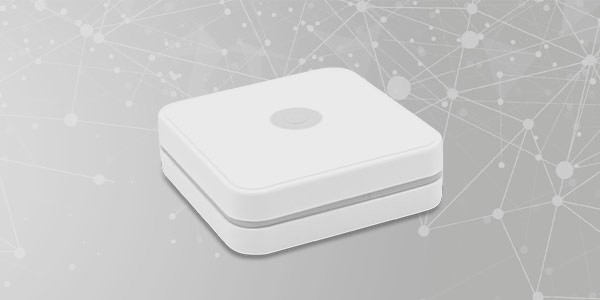Indoor Positioning With Ultra-Wideband
Indoor tracking in industrial environments often requires very precise localization. For this purpose we offer solutions based on the short-range radio technology Ultra-wideband (UWB). It does not work with consumer standards such as Wi-Fi and Bluetooth Low Energy, but offers an accuracy better than 30 cm.
Indoor positioning with Ultra-wideband has some significant advantages: The accuracy is 10-30 cm, which is considerably better than when working with Beacons (1-3 meters) or Wi-Fi (5-15 meters). Latency time is very low (position request up to 100 times/second). Height differences can be measured accurately.
Functionality of Indoor Localization With Ultra-Wideband
Ultra-wideband is a short-range radio technology which can be used for indoor positioning. In contrast to Bluetooth Low Energy and Wi-Fi, positioning is done with transit time methodology (Time of Flight, ToF) instead of the measurement of signal strengths (Receive Signal Strength Indicator, RSSI). This method measures the running time of light between an object and several receivers. For the exact localization of an object at least 3 receivers are necessary (trilateration). Also, there must be direct line-of-sight between receiver and transmitter.
UWB, as a positioning technology, is suitable both for client-based positioning, for example, indoor navigation, and server-based positioning, like asset tracking. Client-based positioning enables position determination on a mobile device. In contrast, in infrastructure-based positioning, the position calculation is performed on a server. The two types of positioning are described in more detail below.
Client-based localization
Client-based localization
In addition to Bluetooth Low Energy (BLE), Ultra-wideband (UWB) can be used as a technology for client-based positioning on mobile devices. The smart device establishes a Bluetooth connection with the Locator Beacon (pairing). UWB is then used as an additional medium for high-precision positioning with low latency. Client-based positioning with UWB is currently only available for recent iPhone models.
Server-based localization
Server-based localization
The asset to be tracked is equipped with a battery-powered combi-tag (BLE/UWB). The combi-tag (BLE/UWB) initializes a pairing via Bluetooth with the Locator Beacon. In the context of time-delayed tracking via Locator Beacons, Ultra-wideband is activated to precisely track the object when it is not moving. Movement phases can be detected by BLE positioning or other sensor technology, such as an accelerometer of the combi-tag. infsoft Locator Nodes process the data provided by the Locator Beacons and send it via Wi-Fi, Ethernet, or UMTS to the infsoft LocAware platform®. Here, infsoft Tracking visualizes the positions of various assets on a map.
This type of positioning is mainly used in industrial environments.
Technical Features of Ultra-Wideband
- Usage of extremely wide frequency bands with a bandwidth of at least 500 MHz
- Almost no interferences
- Frequency bandwidth 3,1 – 10,6 GHz
- Transmission power 0,5 mW / −41,3 dBm/MHz
- Reach 10 – 150 m (depends on the use case)
- Data rate 110 kbit/s – 6.8 mbit/s







